Creating smart lighting zones starts with mapping your home’s layout and traffic patterns. Install compatible smart bulbs, switches, or fixtures that work with your preferred ecosystem (Alexa, Google Home, etc.). Name and group lights by room in your smart home app, then program custom scenes for different activities. Connect motion sensors for automated control and set up routines based on time of day. With proper zone planning, you’ll transform your home into an efficient, responsive environment.
Understanding the Benefits of Smart Lighting Zones

While traditional lighting systems operate as simple on-off fixtures, smart lighting zones transform your home into a responsive, efficient environment tailored to your needs.
You’ll enjoy significant energy savings as lights automatically turn off in empty rooms and dim when full brightness isn’t necessary, leading to lower utility bills over time.
Beyond cost benefits, smart zones enhance your home security by simulating occupancy when you’re away and illuminating entrances automatically. Smart lighting with motion sensors can detect movement at common entry points, providing additional safety without the need to leave lights on continuously.
You’ll appreciate the convenience of controlling your entire lighting system remotely or through pre-set schedules that match your daily routines.
Smart zones also allow you to customize ambiance throughout your home—creating relaxing environments in living spaces while maintaining bright, focused lighting in work areas—all while reducing your environmental footprint.
Assessing Your Home’s Layout for Strategic Zone Planning
To create effective smart lighting zones, you’ll need to map each room’s primary function and determine how lighting should serve those activities.
Consider how people move through your home to place switches and sensors where they’re most intuitive and useful. Your traffic patterns will reveal natural shift points between zones, helping you design lighting that supports rather than interrupts your daily routines. Creating separate conditional elements for each zone in your smart home system will allow for more personalized control and dynamic illumination based on specific area usage.
Room Function Mapping
Before diving into smart lighting installation, you’ll need to carefully analyze how each area of your home functions in daily life. Map out your spaces based on primary activities—reading nooks, cooking stations, or entertainment areas—and assign appropriate lighting levels to each zone.
Within larger rooms, create distinct sub-zones that accommodate multiple functions. For example, your living room might need brighter task lighting near the reading chair but softer ambient lighting around the TV area.
Consider architectural boundaries like walls and partitions as natural zone dividers, but don’t hesitate to create virtual zones in open-concept spaces. Enclosed spaces with ceiling-height partitions require local area controls for compliance and optimal functionality.
Position sensors strategically to detect movement patterns specific to each zone, and make sure controls remain readily accessible for manual adjustments when needed. This functional approach creates a lighting system that intuitively supports your lifestyle.
Traffic Flow Analysis
Understanding how people move through your home is vital for creating effective smart lighting zones. Think of it as mapping the highways and byways of your daily life, identifying where you need illumination most. By analyzing traffic patterns, you’ll prevent dark spots and guarantee light follows you naturally.
To analyze your home’s traffic flow:
- Observe movement patterns – Track how family members travel between rooms during morning routines, meal preparation, and evening activities.
- Identify bottlenecks – Pay special attention to narrow hallways, staircases, and doorways where proper lighting is significant for safety.
- Note change points – Mark doorways and thresholds where people move between rooms, as these are ideal locations for motion sensors. Similar to thermal imaging systems used in traffic detection, these sensors can detect heat signatures and movement regardless of lighting conditions.
Use this analysis to create zones that align with how you actually use your space.
Selecting Compatible Smart Lighting Products for Each Zone
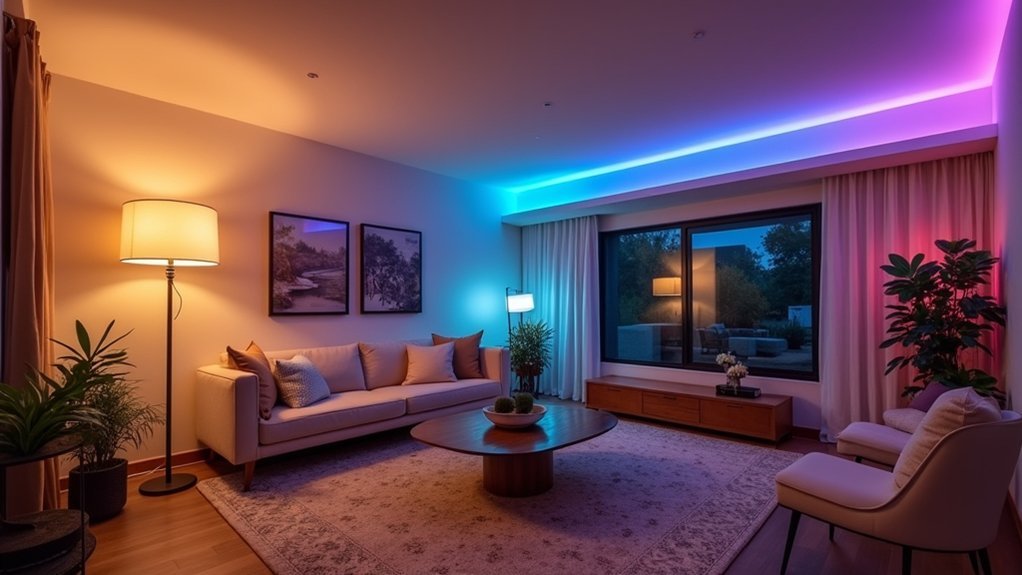
When creating effective smart lighting zones, selecting products that work seamlessly together forms the foundation of your entire system.
First, verify compatibility with your preferred ecosystem—whether Alexa, Google Assistant, or HomeKit—to guarantee thorough voice control across all zones.
Calculate the power requirements for each zone, confirming your controllers can handle the combined wattage of all fixtures.
For outdoor areas, choose weather-resistant options with motion sensors, while living spaces might benefit from tunable white or RGB bulbs that adjust to different activities. Products like the Mesh Linkable Series can create an invisible security fence when strategically positioned around your property.
Consider your control preferences, selecting products that support both app-based management and voice commands.
Look for systems using standard protocols like Wi-Fi, Zigbee, or Z-Wave to maintain flexibility as you expand.
Choose modular, linkable products that simplify future additions to your smart lighting ecosystem.
Step-by-Step Installation Guide for Multi-Zone Lighting
Before starting your multi-zone smart lighting installation, make sure you’ve turned off power at the circuit breaker and gathered all necessary tools including screwdrivers, wire strippers, and a voltage tester.
You’ll likely encounter compatibility issues if your existing switches lack neutral wires, so check your wiring configuration thoroughly before purchasing smart switches.
If your bulbs won’t connect to your network or switches don’t respond, try resetting the devices, updating firmware, or repositioning your Wi-Fi router for better signal coverage. Consider setting up a smart hub to manage larger installations more efficiently and prevent potential Wi-Fi slowdowns.
Preparation Essentials
To establish effective smart lighting zones in your home, proper preparation serves as the foundation for successful installation.
Before touching any wiring, assess your home’s electrical infrastructure to determine if your current setup can support multi-zone lighting without extensive rewiring.
Gather these essential items before beginning:
- Tools and safety equipment – Wire strippers, voltage teaters, screwdrivers, and insulation materials are necessary for proper installation.
- Compatible components – Select smart bulbs, switches, or LED strips that work with your existing fixtures and smart home ecosystem.
- Installation guides – Download manufacturer instructions and apps needed for setup to guarantee smooth configuration.
Always prioritize safety by shutting off power at the circuit breaker and testing circuits before working with any electrical components. Consider consulting with a licensed electrician who can help with proper circuit planning to prevent overloads when implementing your new lighting zones.
Installation Troubleshooting Tips
Even the most carefully planned smart lighting system can encounter issues during setup, which is why understanding common troubleshooting techniques is essential before you begin installation.
If your devices won’t connect, check your Wi-Fi signal strength throughout your home and reset stubborn devices to factory settings. Keep your app and hub firmware updated to prevent compatibility issues. For persistent connectivity problems, consider network segmentation or consulting product-specific support.
Watch for loose wiring connections that may cause intermittent failures. If a zone isn’t responding, verify that dedicated circuits are properly installed and switches comply with local codes. Consider hub-based systems that can reduce Wi-Fi strain and improve the overall reliability of your multi-zone lighting setup.
Remember to maintain manual control options in each zone as a fallback when smart systems fail. For complex electrical issues, don’t hesitate to call a licensed electrician rather than risking safety hazards.
Programming Custom Scenes and Automations by Zone

Once you’ve established your physical lighting zones, creating custom scenes and automations transforms them from mere grouped lights into responsive, intelligent environments.
Use your smart lighting app to name each zone (like “Living Room” or “Kitchen”) and configure multiple scenes per area with unique brightness and color settings.
To maximize your zones’ functionality:
- Set up time-based scene cycling – Program lights to automatically shift from energizing morning brightness to relaxing evening warmth.
- Implement presence detection – Connect motion sensors to zones so lights respond when you enter or leave specific areas. This approach significantly contributes to energy consumption reduction by ensuring lights only operate when needed.
- Integrate with other smart devices – Link lighting zones with thermostats or security systems for coordinated responses to environmental changes.
Test your automations regularly to guarantee reliable performance and make adjustments as your needs change.
Integrating Voice Controls and Mobile Apps With Your Zones
Voice controls and mobile apps represent the command center for your smart lighting zones, elevating their functionality beyond basic automations. With Amazon Alexa or Google Assistant, you’ll enjoy hands-free operation by simply saying commands like “turn on living room lights” for precise zone control.
Most smart lighting systems offer dedicated apps that let you create and manage zones remotely. You can customize icons and names for each zone, making navigation intuitive. These apps enable control of thousands of lights across different areas of your home from anywhere. The integration with existing smart home systems ensures seamless device communication for a unified experience across all your connected technology.
The integration creates substantial energy savings through automated adjustments based on natural light conditions. Your system can adapt to your daily routines while ambient light sensors optimize brightness levels automatically.
This seamless control not only enhances convenience but guarantees you’ll never return to a dark home.
Troubleshooting Common Smart Lighting Zone Issues
While smart lighting zones can transform your home experience, they occasionally present technical challenges that require systematic troubleshooting.
Connectivity issues are often the primary culprit – weak Wi-Fi signals or overcrowded networks can prevent your lights from responding properly.
Unreliable connections remain the leading cause of smart lighting failures, particularly when Wi-Fi strength deteriorates or networks become congested.
When facing problems with your smart lighting zones, try these solutions:
- Check physical connections first – confirm bulbs are properly installed and power is on before diving into technical fixes
- Reset devices and update firmware – many issues resolve with a simple power cycle or software update
- Review automation rules – conflicting schedules or multiple users issuing commands can cause unexpected behavior
For persistent dimming problems, verify bulb compatibility with your system and clean sensor surfaces to prevent false triggers. Consider reducing connected devices to your network if you notice response delays or intermittent connectivity in your smart lighting zones.
Frequently Asked Questions
Can Smart Lighting Zones Work During Internet Outages?
Yes, your smart lighting zones can work during internet outages if you’ve installed physical switches, chosen systems with local control capabilities (Z-Wave/ZigBee with local hubs), or set up pre-configured automations that don’t require cloud connectivity.
How Many Devices Can I Include in a Single Zone?
You can include 10-15+ devices in a single zone typically. While hub-based systems might support up to 50-200 lights total, it’s best to group them logically by room or function for reliable performance.
Will Smart Lighting Zones Affect My Home’s Resale Value?
Yes, smart lighting zones can boost your home’s resale value. They’re attractive to buyers for their energy efficiency, convenience, and modern appeal, potentially increasing your property value by up to 5% according to studies.
Can Outdoor Lighting Be Integrated Into Indoor Zone Systems?
Yes, you can integrate outdoor lighting into your indoor zone systems. Many smart platforms support this connection, allowing you to control both areas together through voice commands, apps, or automated schedules for seamless home management.
Do Smart Lighting Zones Increase Electricity Bills?
No, smart lighting zones typically reduce your electricity bills by enabling better control of energy usage through scheduling, dimming, and motion sensors, despite minimal standby power consumption that’s outweighed by the overall efficiency gains.
In Summary
By creating smart lighting zones in your home, you’ve taken a significant step toward modern living. You’ll enjoy enhanced convenience, improved energy efficiency, and a more personalized atmosphere throughout your space. Don’t hesitate to experiment with your setup—try different scenes, refine your automations, and expand your system over time. Your smart home journey has only just begun with these customized lighting zones.

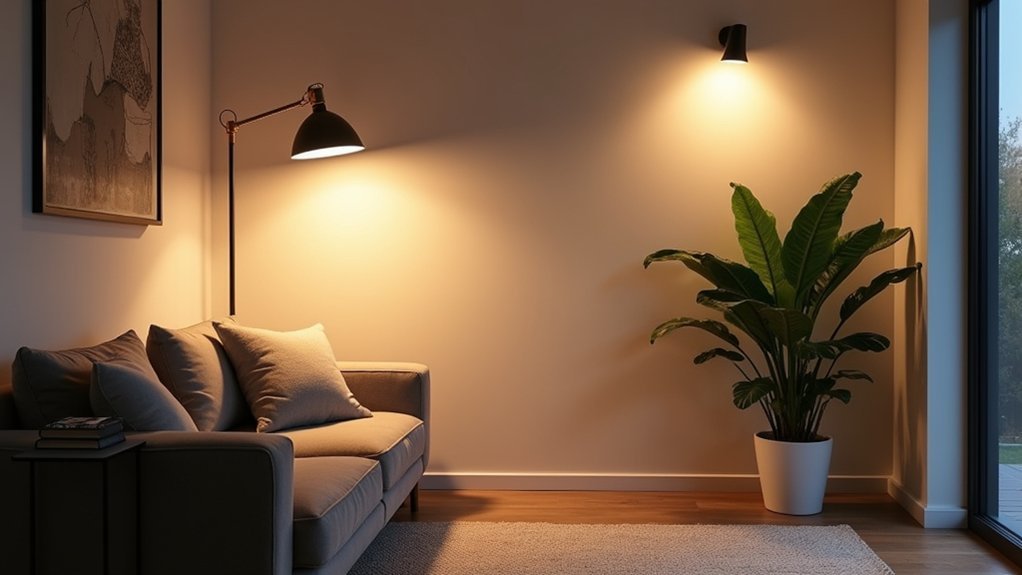
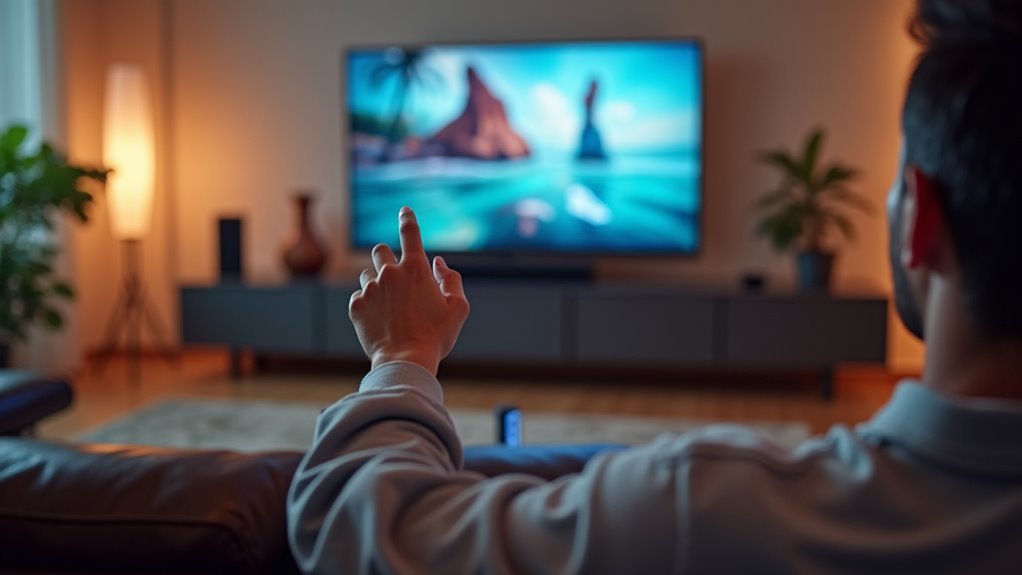
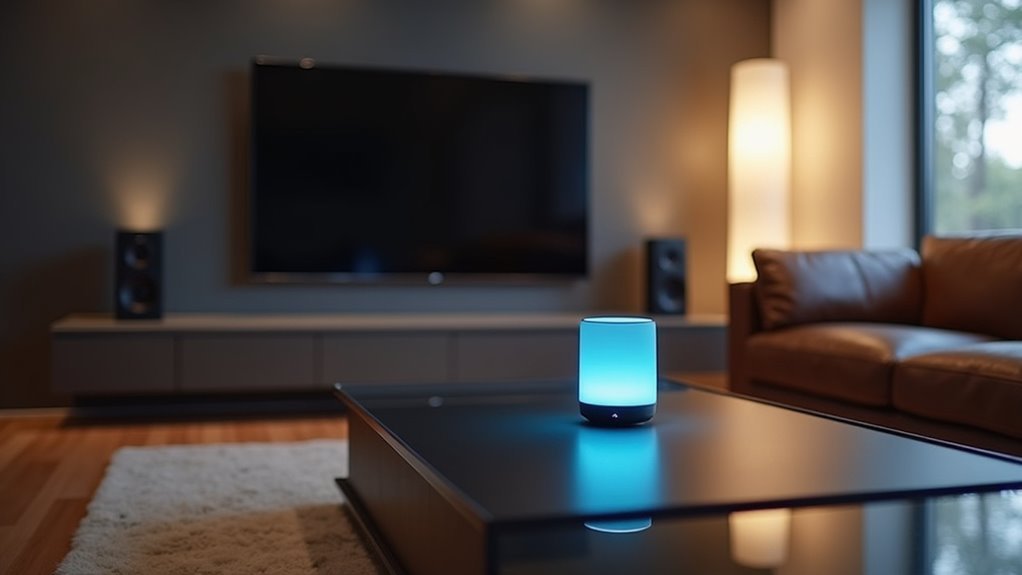
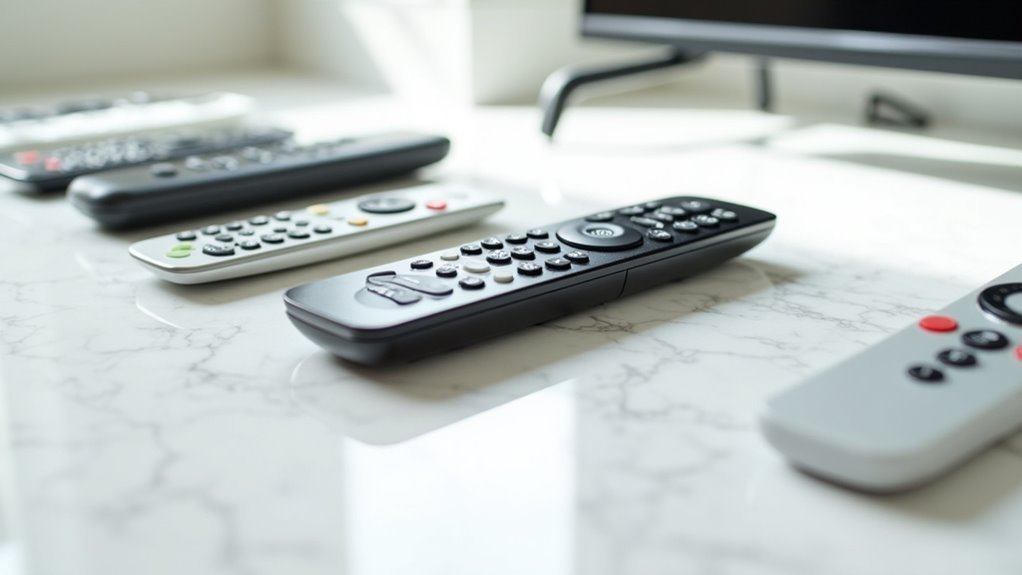
Leave a Reply